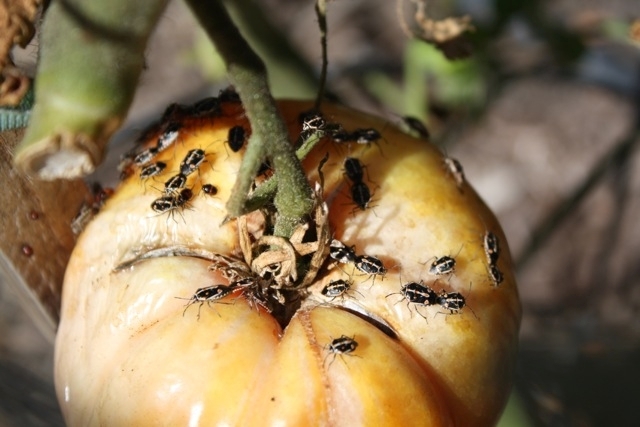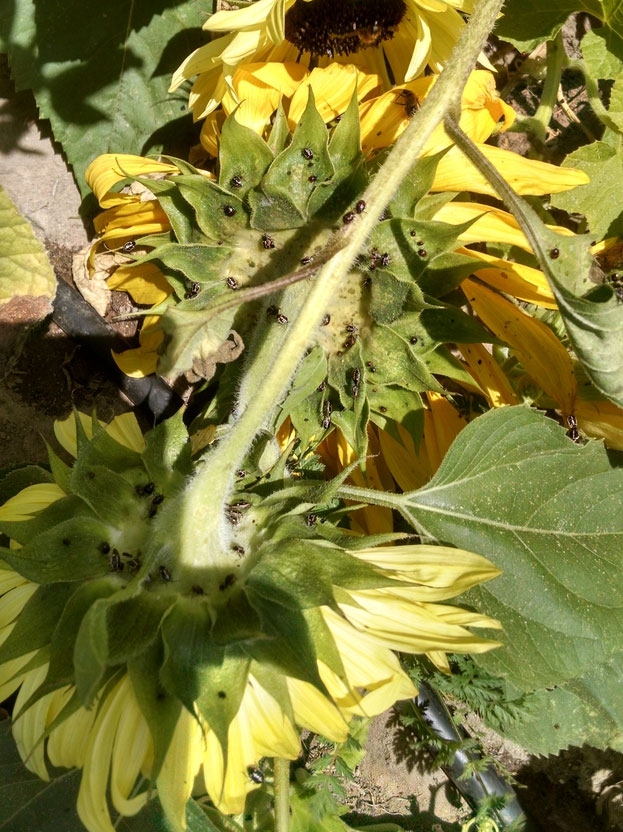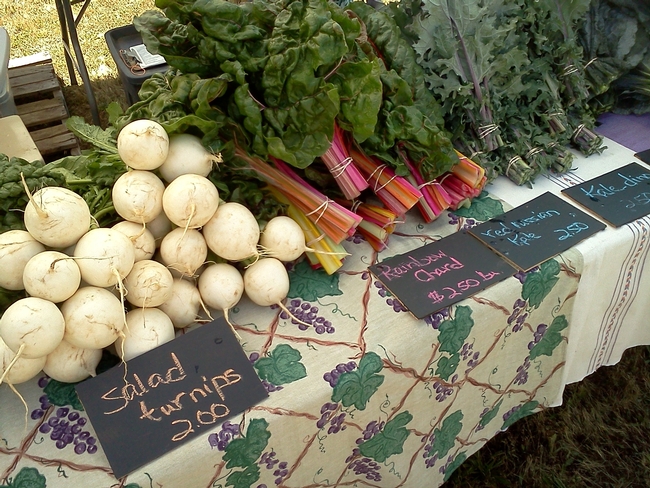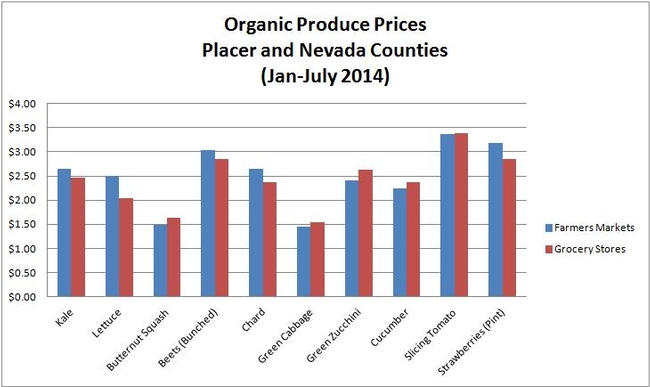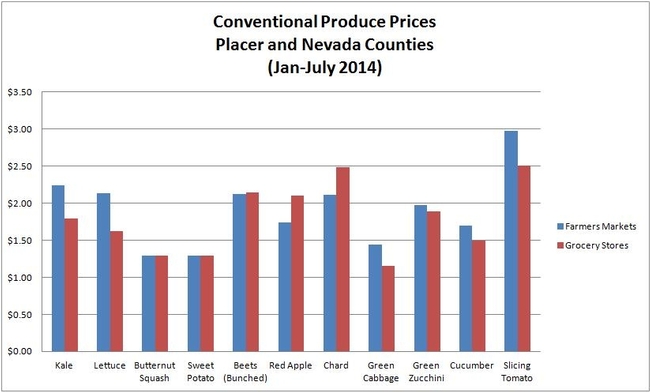UC Food and Agriculture Blogs
A disheartening new pest invades California vegetable gardens
California gardeners harvesting their summer produce may encounter a new pest – the bagrada bug. The native of Africa made its first California appearance in Los Angeles County six years ago and has been moving eastward and northward ever since.
“Citizen scientists have been instrumental in reporting the occurrence of bagrada in various counties and are helping map its current distribution,” said Surendra Dara, UC Cooperative Extension advisor in San Luis Obispo, Santa Barbara and Ventura counties. “This is a very serious pest. It is wiping out gardens, and is of great concern for small-scale and organic growers.”
Bagrada bugs are major pests of cruciferous vegetables, such as cabbage, kale, cauliflower, Brussels sprouts and broccoli, but they don't appear to be picky eaters. They have been known to feed on a wide variety of garden vegetables in California, including green beans, cantaloupe, corn, peppers, potatoes, tomatoes and sunflower. Even landscape plants are not immune. Bagrada bugs have been found feeding on ornamental plants in the mustard family, like sweet alyssum, stock and candytuft.
The adult bagrada bugs are about the size of watermelon seeds and have shield-shaped black backs with white and orange markings. Young bagrada bugs – with their red, black and white markings – are sometimes mistaken for ladybugs. But bagrada bugs have piercing and sucking mouthparts which cause dead spots on plant leaves and stems when they feed, and result in stunted growth, plant deformities and plant death.
Dara said scientists had hoped cold winter temperatures in northern counties of California would limit the bagrada's northward march, but that hasn't been the case so far.
“Bagrada bugs can survive the winter or cold nights by entering the top layer of the soil around crops,” he said. "They start appearing again in early spring and move from weeds to young vegetables."
For more information on bagrada bugs, see the Pest Note produced by the UC Integrated Pest Management Program. In addition, Dara regularly posts bagrada bug updates on his blog, Strawberries and Vegetables.
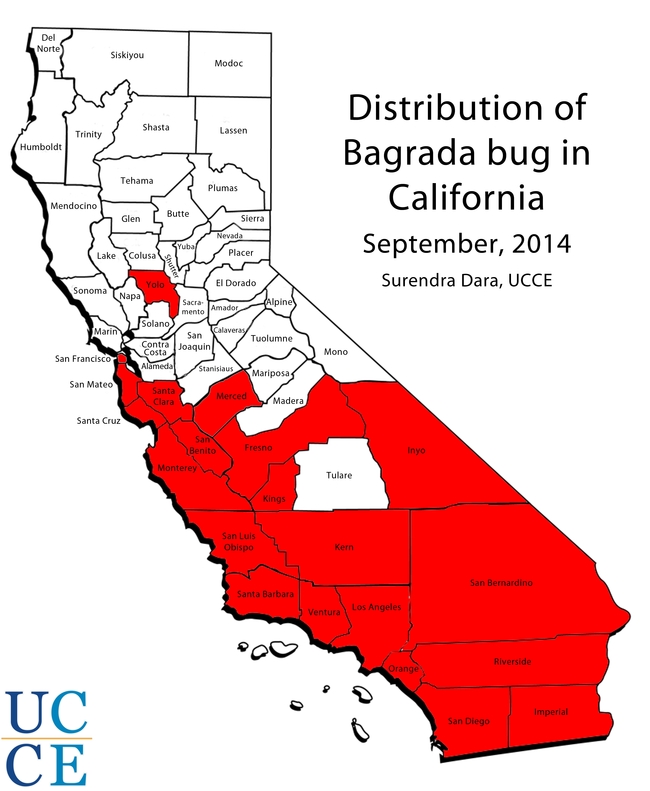
Distribution of bagrada bug in California, September 2014.
Fall is for Fertilizing
Fall is just around the corner so it's time to start thinking about fertilizing your lawn. All types of lawns are actively growing during the fall months. Fertilizer applied at this time will help ensure that turfgrass is vigorous enough to outcompete...
Farmers market prices compare well with the supermarket produce aisle
Many shoppers believe they can buy cheaper produce at supermarkets than at local farmers markets. A new UC Cooperative Extension study dispels that common misperception.
In Placer and Nevada counties, UCCE received a CDFA Specialty Block Grant to encourage consumers to eat more fruits and vegetables and support the local agricultural industry by buying the produce from them. The project led to the creation of the “Eat Local Placer Nevada” campaign.
“Buying locally grown products supports local farmers and ranchers and it keeps land in agriculture,” said Cindy Fake, UCCE farm advisor in Placer and Nevada counties. “Simply put, it's the right thing to do.”
To give consumers extra incentive to eat local, the group launched a seven-month study to compare prices at farmers markets and grocery stores. Volunteers and staff collected price data at four farmers markets and six grocery stores from January to July 2014. Specials and sale items were not part of the study. The data suggests that organic produce at farmers markets is priced about the same as organic produce at grocery stores.
In terms of conventional produce, grocery stores had cheaper prices on 6 out of 11 items; however, consumers would still save money picking up red apples, beets and chard at the farmers markets. The cost of conventional butternut squash and sweet potatoes was virtually equal at the two venues.
“Contrary to many consumers' perception, farmers market prices are competitive with regular supermarket prices,” Fake said. “Some prices are slightly higher, some slightly lower, but they are in the same range. “
However, there are other factors shoppers should keep in mind when deciding to buy supermarket produce or fruit and vegetables grown by their neighboring farmers.
“Produce at the farmers market is sold the same day or the day after it is harvested,” Fake said. “Because of that, its shelf life is two to three times longer than what is found in the supermarket. And because it is so fresh, you have a higher nutrient content and it will taste better.”
Fake said experts believe buying local also supports the local economy. She is collaborating on a project led by Shermain Hardesty, UCCE specialist in the Department of Agricultural and Resource Economics at UC Davis, to document the economic impact of local food systems in Placer, El Dorado, Sacramento and Yolo counties. The researchers will gather data about farmers' purchases of inputs and local sales of produce.
“This project will provide science-based evidence to guide public policy and program design aimed at supporting local farmers and local food systems into the future,” Fake said.
The study – titled Measuring the Impact of Local Food Marketing on the Local Economy – is supported with a $226,048 grant from the UC Division of Agriculture and Natural Resources.
Sighting swarming termites?
After the subterranean termite, the western drywood termite, Incisitermes minor, is California's second most important termite pest. Drywood termites are difficult to detect. They live deep inside wood and except during periods when they swarm or when...
Are Farmers' Market Prices Really More Expensive?
Are Farmers' Market Prices Really More Expensive? That was one of the questions we set out to explore this year with the Eat Local Placer-Nevada project. Why are we concerned about cost when it comes to local produce? One of the goals of the Eat Local...



